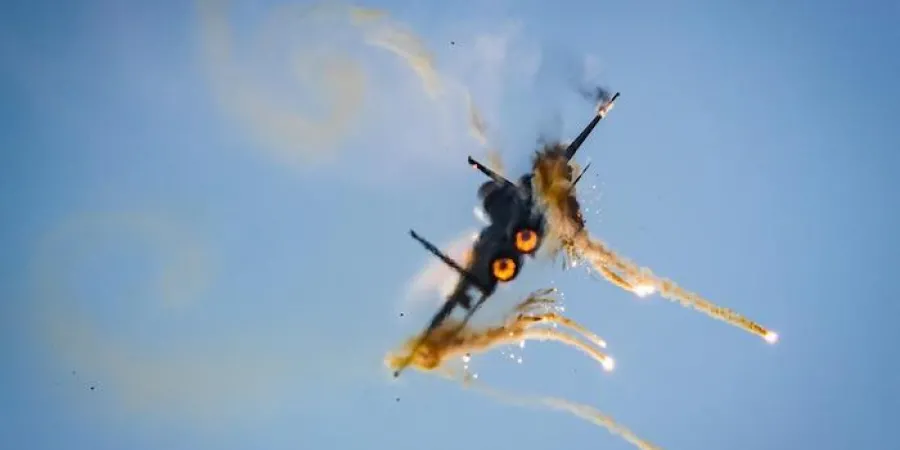IAF develops new approach to air combat training
"We are dealing with the flight level of our pilots and navigators, and it's not connected to when there will be air combat or not," said the IAF Commander, Maj. Gen. Norkin
Dan Arkin
| 07/03/2021
Even if the likelihood of air combat in the future is low, the Israeli Air Force believes that air combat training is the ultimate training method for developing skills that help pilots in battle. The last air battle involving IAF pilots took place above Lebanon in 1985.
During the last two years, the IAF Training Department, in cooperation with the 133rd Squadron, which is named "Knights of the Twin Tail", made up of F-15 Eagles, developed a new method of air combat training. This method was the topic of a day of study that was attended by the commanders of all the combat squadrons and the regional control units, and led by the commander of the IAF, Maj. Gen. Amikam Norkin.
The head of the Training Department, identified only as "Col. L.", said that "The countries around us are arming themselves with very advanced fighter planes. In an operational scenario, when the surroundings are full of planes and electronic warfare systems, it is possible that missiles will miss (their targets), and planes will reach outside radar range, and then the pilots may find themselves in a tight battle with enemy planes at close range in which they see them with their eyes."
The IAF website reported that next month the entire combat array will train according to the new training portfolio that was composed by the Training Department. The head of the Training Department said, "We are currently considering the advanced and sophisticated weapon and electronic warfare systems that we have, and also those of our enemies. The training takes the air crews a step forward, training them in operating the advanced weapon and in its readiness for the weapon systems of the enemy."
The IAF Commander, Maj. Gen. Norkin, summarized the day of study by saying, "The flight level of the members of our Air Force is the biggest strategic asset that the IAF has. We are dealing with the flight level of our pilots and navigators, and it's not connected to when there will be air combat or not, but rather to the future of the IAF, to the flight level and operation of the plane."
"We are dealing with the flight level of our pilots and navigators, and it's not connected to when there will be air combat or not," said the IAF Commander, Maj. Gen. Norkin
Even if the likelihood of air combat in the future is low, the Israeli Air Force believes that air combat training is the ultimate training method for developing skills that help pilots in battle. The last air battle involving IAF pilots took place above Lebanon in 1985.
During the last two years, the IAF Training Department, in cooperation with the 133rd Squadron, which is named "Knights of the Twin Tail", made up of F-15 Eagles, developed a new method of air combat training. This method was the topic of a day of study that was attended by the commanders of all the combat squadrons and the regional control units, and led by the commander of the IAF, Maj. Gen. Amikam Norkin.
The head of the Training Department, identified only as "Col. L.", said that "The countries around us are arming themselves with very advanced fighter planes. In an operational scenario, when the surroundings are full of planes and electronic warfare systems, it is possible that missiles will miss (their targets), and planes will reach outside radar range, and then the pilots may find themselves in a tight battle with enemy planes at close range in which they see them with their eyes."
The IAF website reported that next month the entire combat array will train according to the new training portfolio that was composed by the Training Department. The head of the Training Department said, "We are currently considering the advanced and sophisticated weapon and electronic warfare systems that we have, and also those of our enemies. The training takes the air crews a step forward, training them in operating the advanced weapon and in its readiness for the weapon systems of the enemy."
The IAF Commander, Maj. Gen. Norkin, summarized the day of study by saying, "The flight level of the members of our Air Force is the biggest strategic asset that the IAF has. We are dealing with the flight level of our pilots and navigators, and it's not connected to when there will be air combat or not, but rather to the future of the IAF, to the flight level and operation of the plane."



